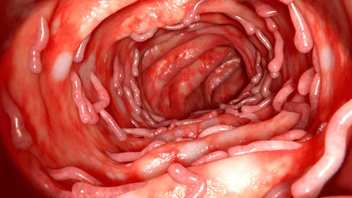Breaking Down Alveoli Atelectasis - You Need to Know This for the NCLEX

Understanding Alveolar Atelectasis
Is important for nursing students to prepare for the NCLEX exam due to several reasons:
Common Respiratory Issue: Atelectasis is a common respiratory complication that can occur in various healthcare settings. Nurses need to recognize its risk factors, signs, and appropriate interventions.
Impaired Gas Exchange: Atelectasis can lead to impaired gas exchange, resulting in decreased oxygenation and potential respiratory distress. Nurses should understand how to assess for and manage these changes.
Surgical Procedures: Patients undergoing surgery, especially abdominal or thoracic procedures, are at higher risk of developing atelectasis due to reduced lung expansion postoperatively. Nurses need to understand preventive measures.
Ventilation-Perfusion Mismatch: Atelectasis can contribute to ventilation-perfusion mismatch, leading to hypoxemia. Nurses should know how to assess for this mismatch and intervene accordingly.
Positioning and Mobility: Nurses need to be knowledgeable about proper patient positioning, turning, and early ambulation to prevent areas of lung collapse and promote lung expansion.
Airway Clearance: Effective airway clearance techniques are crucial to prevent mucus plugging and promote lung function. Nurses should understand the importance of measures like deep breathing, incentive spirometry, and coughing.
Pulmonary Hygiene: Nurses play a role in educating patients about the importance of maintaining good pulmonary hygiene, including smoking cessation and staying hydrated.
Chest Physiotherapy: Understanding techniques for chest physiotherapy, such as percussion and vibration, can aid in promoting mucus clearance and lung expansion.
Oxygen Therapy: Nurses need to know how to administer supplemental oxygen, monitor its effectiveness, and prevent complications like oxygen toxicity.
Respiratory Interventions: Nurses should understand interventions such as bronchodilator administration and use of positive end-expiratory pressure (PEEP) to improve lung recruitment.
Documentation: Accurate documentation of assessments, interventions, and patient responses is important for communication among the healthcare team.
NCLEX Preparation: The NCLEX exam may include questions related to atelectasis, its causes, prevention, assessment, and interventions. A strong understanding of this topic is essential for answering these questions accurately.
Overall, understanding alveolar atelectasis equips nursing students to provide safe, patient-centered care to individuals at risk of this respiratory complication. It ensures that nursing students are prepared to address the unique challenges and needs of patients with atelectasis and contribute to positive patient outcomes.
Overview of Alveoli Atelectasis
Atelectasis is the collapse of a lung or lung lobe due to the deflating of the alveoli
General Information for Alveoli Atelectasis:
1. Alveoli deflate, Collapse of the lung
2. Common after surgery→ Shallow breathing
3. Excessive pulmonary secretions
Assessment for Alveoli Atelectasis
1. Diminished breath sounds on the affected side
2. Chest pain with breathing
3. Fever
4. Chest X-ray shows collapse (white)

Therapeutic Management for Alveoli Atelectasis
1. CPT (Chest Physiotherapy) → Vibrations to loosen secretions
2. IPPB (Intermittent Positive Pressure Breathing) → Positive pressure to open alveoli
3. IS (Incentive Spirometer) – Slow deep breaths
a. ↑ volume = reinflate alveoli
4. Position Changes→ Mobilize secretions
5. Invasive Mechanical Ventilation
Nursing Case Study for Alveoli Atelectasis
Patient Profile:
Linda Williams, a 55-year-old woman, undergoes abdominal surgery for gallbladder removal. She is admitted to the surgical unit for postoperative care.
Assessment:
Upon assessment, Linda is experiencing shallow breathing and reports mild discomfort on inspiration. Her respiratory rate is elevated, and her oxygen saturation is lower than baseline.

Interventions:
1. Respiratory Assessment:
Perform a thorough respiratory assessment, including auscultation of lung sounds, to identify signs of decreased lung expansion and atelectasis.
2. Breathing Exercises:
Instruct Linda to practice deep breathing exercises, emphasizing the importance of full lung expansion.
3. Incentive Spirometry:
Demonstrate and encourage the use of an incentive spirometer to help Linda take deep breaths and improve lung function.
4. Early Ambulation:
Assist Linda in early ambulation to promote lung expansion and prevent areas of lung collapse.
5. Positioning:
Assist Linda in changing positions frequently, including turning from side to side, to facilitate lung recruitment.
6. Pain Management:
Administer pain medication as prescribed to ensure Linda can take deep breaths without discomfort.
7. Hydration:
Encourage Linda to stay well-hydrated, as proper hydration helps maintain the thin consistency of respiratory secretions.
8. Coughing Techniques:
Teach Linda effective coughing techniques, ensuring she understands how to clear her airways without straining.
9. Oxygen Therapy:
Administer supplemental oxygen as needed to maintain oxygen saturation within the target range.
10. Patient Education:
Educate Linda about the risk of atelectasis postoperatively, the importance of lung exercises, and early reporting of any respiratory changes.
11. Mobilization Support:
Collaborate with the physical therapy team to develop a plan for progressive mobility and exercises.
Outcome:
With diligent efforts to improve lung expansion and prevent atelectasis, Linda's respiratory status gradually improves. She becomes more engaged in her breathing exercises, ambulates regularly, and reports decreased discomfort on inspiration. Her oxygen saturation returns to baseline, and she is discharged with instructions to continue practicing deep breathing and coughing techniques at home.
Struggling to keep up in class?
The Nursing School Survival Package gives you a daily plan, visual cheatsheets, and everything you need to stop falling behind.
👉 Get the system that actually works →
You CAN Do This
Happy NurMaster Alveoli & Atelectasis – and So Much More
Want more must-know NCLEX topics like this one?sing!




.png?width=352&name=Coronary%20Artery%20Disease%20nclex%20review%20for%20nursing%20students%20(1).png)

